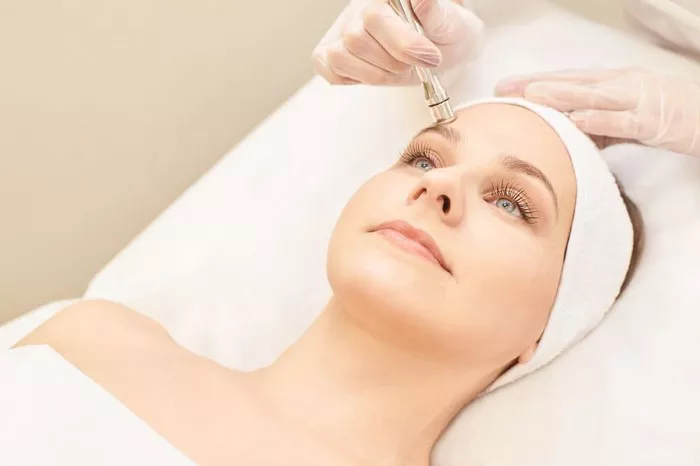Microdermabrasion is a popular exfoliating treatment that helps improve skin texture, reduce fine lines, and promote a more youthful complexion. As an effective at-home or in-office procedure, it’s important to understand how often you should use microdermabrasion to achieve optimal results while maintaining the health and integrity of your skin. In this article, we will explore the recommended frequency of microdermabrasion treatments based on your skin type and goals.
Understanding Microdermabrasion
Microdermabrasion is a non-invasive exfoliation technique that removes the outermost layer of dead skin cells, revealing a fresh and rejuvenated complexion. It involves using a handheld device or a professional machine that propels fine crystals or a diamond-tipped wand onto the skin’s surface, gently abrading the skin and suctioning away the exfoliated particles.
The benefits of microdermabrasion include improved skin texture, reduced appearance of fine lines and wrinkles, diminished acne scars and hyperpigmentation, and enhanced absorption of skincare products. By exfoliating the skin, microdermabrasion promotes cellular turnover and stimulates collagen production, resulting in a smoother, more youthful complexion.
Determining the Frequency of Microdermabrasion
The frequency at which you should use microdermabrasion depends on various factors, including your skin type, sensitivity, and treatment goals. Here are some general guidelines to help you determine how often you should incorporate microdermabrasion into your skincare routine:
1. Normal Skin
If you have normal skin without any major concerns or sensitivities, you can typically perform microdermabrasion treatments every two to four weeks. This frequency allows your skin to recover fully and regenerate between treatments, ensuring optimal results. Regular exfoliation helps maintain a smooth texture and keeps your skin looking fresh and rejuvenated.
2. Oily or Acne-Prone Skin
For individuals with oily or acne-prone skin, microdermabrasion can be an effective treatment to unclog pores, control excess sebum, and reduce the appearance of acne scars. If you have active acne, it’s important to consult with a dermatologist before considering microdermabrasion. In general, individuals with oily or acne-prone skin can perform microdermabrasion treatments every two to three weeks, depending on their skin’s tolerance and the severity of their concerns.
3. Dry or Sensitive Skin
If you have dry or sensitive skin, it’s crucial to approach microdermabrasion with caution to avoid irritation or excessive dryness. Individuals with these skin types may benefit from a less frequent approach, typically performing microdermabrasion treatments every four to six weeks. This allows ample time for the skin to recover and replenish its natural moisture barrier. It’s important to closely monitor your skin’s response and adjust the frequency accordingly.
4. Mature or Aging Skin
Microdermabrasion can be particularly beneficial for mature or aging skin, as it helps improve skin texture, reduce fine lines, and promote collagen production. Individuals with mature skin can typically perform microdermabrasion treatments every three to four weeks. However, it’s essential to take into account other anti-aging treatments or procedures you may be using and consult with a skincare professional to develop a comprehensive plan that addresses your specific concerns.
5. Combination Skin
If you have combination skin with both oily and dry areas, it’s important to consider the different needs of each area when determining the frequency of microdermabrasion treatments. You can perform microdermabrasion every three to four weeks, focusing on the areas that are not as sensitive or prone to dryness. Adjust the frequency based on the individual response of each area of your skin.
Important Considerations
While the guidelines above provide a starting point, it’s important to remember that every individual’s skin is unique, and the frequency of microdermabrasion should be tailored to your specific needs and skin response. Here are some additional considerations to keep in mind:
1. Consult with a Skincare Professional
Before incorporating microdermabrasion into your skincare routine, especially if you have specific concerns or skin conditions, it’s advisable to consult with a skincare professional or dermatologist. They can assess your skin, discuss your goals, and provide personalized recommendations regarding the ideal frequency of microdermabrasion treatments.
2. Start Slow and Gradually Increase
If you’re new to microdermabrasion or have sensitive skin, it’s important to start with less frequent treatments and gradually increase the frequency as your skin adapts. This approach allows you to assess your skin’s tolerance and avoid potential irritation or over-exfoliation.
3. Observe Your Skin’s Response
Pay close attention to how your skin reacts after each microdermabrasion treatment. If you experience prolonged redness, excessive dryness, or increased sensitivity, it may be an indication that you need to reduce the frequency or intensity of the treatments. On the other hand, if your skin responds well and shows improvement, you may consider increasing the frequency gradually.
4. Avoid Over-Exfoliation
While microdermabrasion is a beneficial exfoliating treatment, it’s important to avoid over-exfoliation, as it can compromise the skin’s natural protective barrier and lead to increased sensitivity. Follow the instructions provided with your microdermabrasion device or consult with a professional to ensure you are using it correctly and not exceeding the recommended frequency.
5. Combine with Other Skincare Treatments
Microdermabrasion can be complemented with other skincare treatments or procedures to enhance its benefits. However, it’s crucial to coordinate these treatments with a skincare professional to ensure they are compatible and provide the desired outcomes without overwhelming the skin.
Conclusion
Determining the frequency of microdermabrasion treatments requires consideration of your skin type, sensitivity, and treatment goals. Whether you have normal, oily, dry, sensitive, mature, or combination skin, it’s important to approach microdermabrasion with care and monitor your skin’s response. Consulting with a skincare professional can provide valuable guidance and help you develop a skincare routine that incorporates microdermabrasion at the optimal frequency for your unique needs. By doing so, you can enjoy the benefits of improved skin texture, reduced fine lines, and a radiant complexion while maintaining the overall health and integrity of your skin.


